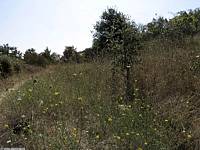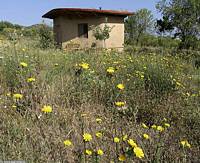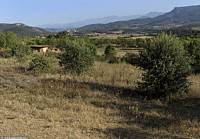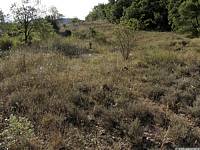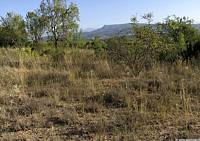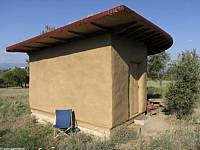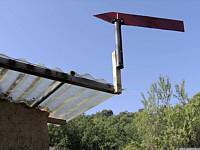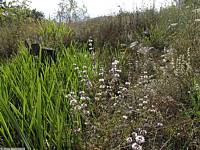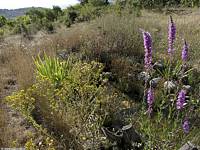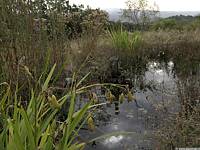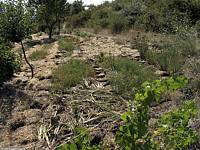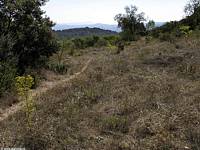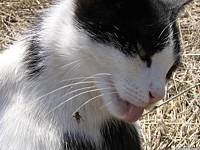|
|
Nature
Switched On
|
|
|
introduction
Picris hieracioides flowers for months and seems to be
favoured by the haymaking regime.
|
2011 July 30 to August 25 With temperatures exceptionally
passing 35ºC, this summer is not particularly hot, but thunderstorms
with some substantial rain are equally rare and the vegetation is
quite dried out by now. Picris hierac
|
Chondrilla juncea's deep roots and green stems without
leaves permit the flowering in the driest and hottest period of the
year.
|
|
Higher terrace, looking south-east. Thymus vulgaris in the foreground. 11 Aug 8:37 |
||
|
Higher terrace, looking north. 11 Aug 8:43 |
||
|
When we came back from some travelling after several weeks we had a surprise: the clay plaster of the western wall of the house showed some nasty crevices. Our neighbour told us their had been a ferocious thunder storm with almost horizontal rain fall of about 20 litres in less than 15 minutes. This had never happened before and let's hope it stays as rare as that.
Since this storm in the middle of July the weather has been remarkably stable and the recently installed wind vane shows that the prevailing winds come from the south-east. |
||
| The
western wall must have become thoroughly wet in spite of the 90 cm
overhang of the roof. 30 Jul 9:58 |
The damage is not really a
disaster: the repair took only 2 hours and consisted in washing the
wall with a wet sponge. 31 Jul 18:33 |
|
| The
recently installed wind vane on the roof of the greenhouse. 1 Aug 10:27 |
||
|
The second re-growth of Sparganium on the left. |
|
The upper pond with Sparganium in the centre and Lythrum salicaria (violet) and Senecio jacobaea (yellow) on the right. 30 Jul 10:07 |
Upper
pond, looking south.
|
Upper pond, after taking away
Sparganium. The fruits are Iris pseudacorus. Looking east. 22 Aug 9:11
|
|
|
The Sparganium leaves are spread out onto the bed
of some Kale plantings. |
|
|
|
|
Recently mown area on the middle
terrace. Looking south-east. 11 Aug 11:23
|
|
|
This haymaking is a double-edged sword: the product is an excellent mulch material for the vegetable garden and the method favours the spontaneous vegetation in the zone. By taking away the hay the soil is gradually becoming poorer and offers more opportunities for delicate herbs to the detriment of more aggressive grass species. I think the effects can already be detected in some areas with a healthy growth of, among others, Picris hieracioides and Plantago lanceolata. Another example of this kind of sword is what I will call the cat-fur-fly. It is a faithful companion of 'Frisona' and 'Camarero' and its activities, straying all over the animal's fur but especially the hind part, almost certainly indicate the consumption of all kinds of parasites. |
||
|
Just one 'Cat-fur-fly' is tending the fur of 'Frisona', the mother of 4 kittens of which we haven't received any life sign for the last two months. 1 Aug 10:24 |
||
|
introduction |
|
